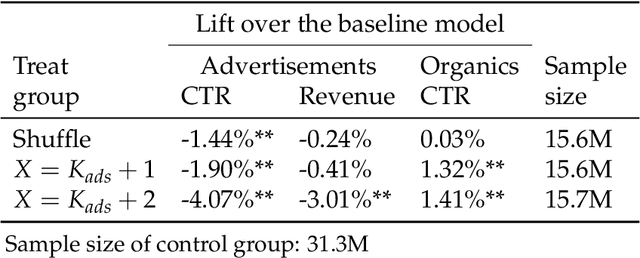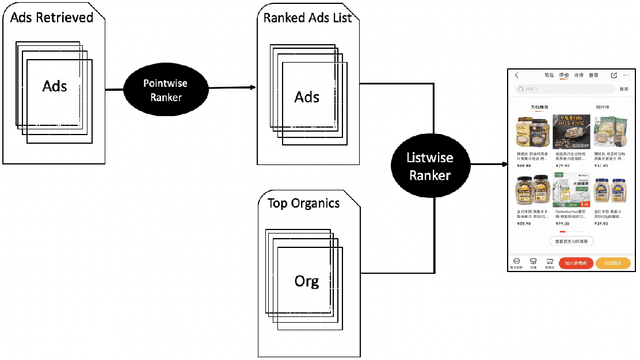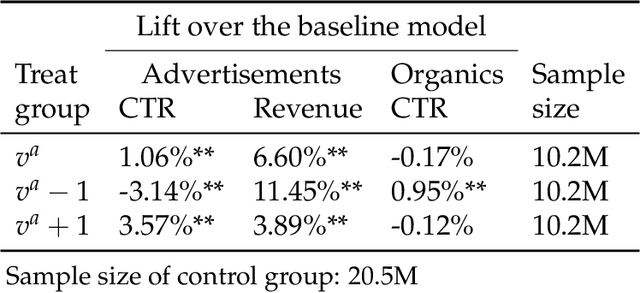Harikesh Nair
Blending Advertising with Organic Content in E-Commerce: A Virtual Bids Optimization Approach
May 28, 2021



Abstract:In e-commerce platforms, sponsored and non-sponsored content are jointly displayed to users and both may interactively influence their engagement behavior. The former content helps advertisers achieve their marketing goals and provides a stream of ad revenue to the platform. The latter content contributes to users' engagement with the platform, which is key to its long-term health. A burning issue for e-commerce platform design is how to blend advertising with content in a way that respects these interactions and balances these multiple business objectives. This paper describes a system developed for this purpose in the context of blending personalized sponsored content with non-sponsored content on the product detail pages of JD.COM, an e-commerce company. This system has three key features: (1) Optimization of multiple competing business objectives through a new virtual bids approach and the expressiveness of the latent, implicit valuation of the platform for the multiple objectives via these virtual bids. (2) Modeling of users' click behavior as a function of their characteristics, the individual characteristics of each sponsored content and the influence exerted by other sponsored and non-sponsored content displayed alongside through a deep learning approach; (3) Consideration of externalities in the allocation of ads, thereby making it directly compatible with a Vickrey-Clarke-Groves (VCG) auction scheme for the computation of payments in the presence of these externalities. The system is currently deployed and serving all traffic through JD.COM's mobile application. Experiments demonstrating the performance and advantages of the system are presented.
Causally Driven Incremental Multi Touch Attribution Using a Recurrent Neural Network
Feb 05, 2019



Abstract:This paper describes a practical system for Multi Touch Attribution (MTA) for use by a publisher of digital ads. We developed this system for JD.com, an eCommerce company, which is also a publisher of digital ads in China. The approach has two steps. The first step ('response modeling') fits a user-level model for purchase of a product as a function of the user's exposure to ads. The second ('credit allocation') uses the fitted model to allocate the incremental part of the observed purchase due to advertising, to the ads the user is exposed to over the previous T days. To implement step one, we train a Recurrent Neural Network (RNN) on user-level conversion and exposure data. The RNN has the advantage of flexibly handling the sequential dependence in the data in a semi-parametric way. The specific RNN formulation we implement captures the impact of advertising intensity, timing, competition, and user-heterogeneity, which are known to be relevant to ad-response. To implement step two, we compute Shapley Values, which have the advantage of having axiomatic foundations and satisfying fairness considerations. The specific formulation of the Shapley Value we implement respects incrementality by allocating the overall incremental improvement in conversion to the exposed ads, while handling the sequence-dependence of exposures on the observed outcomes. The system is under production at JD.com, and scales to handle the high dimensionality of the problem on the platform (attribution of the orders of about 300M users, for roughly 160K brands, across 200+ ad-types, served about 80B ad-impressions over a typical 15-day period).
 Add to Chrome
Add to Chrome Add to Firefox
Add to Firefox Add to Edge
Add to Edge